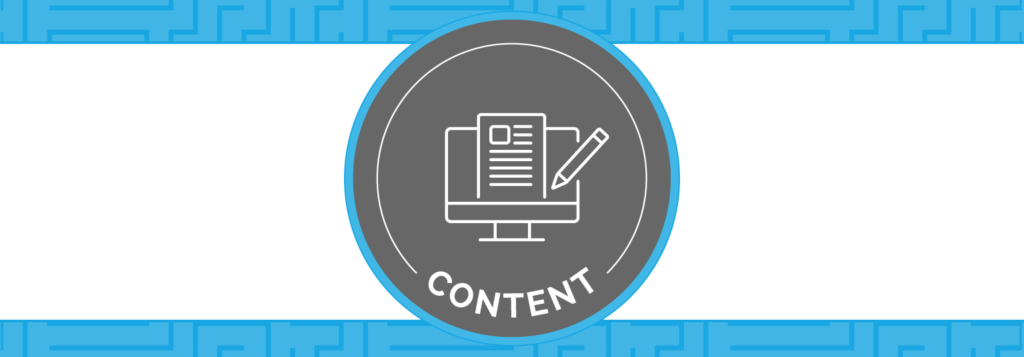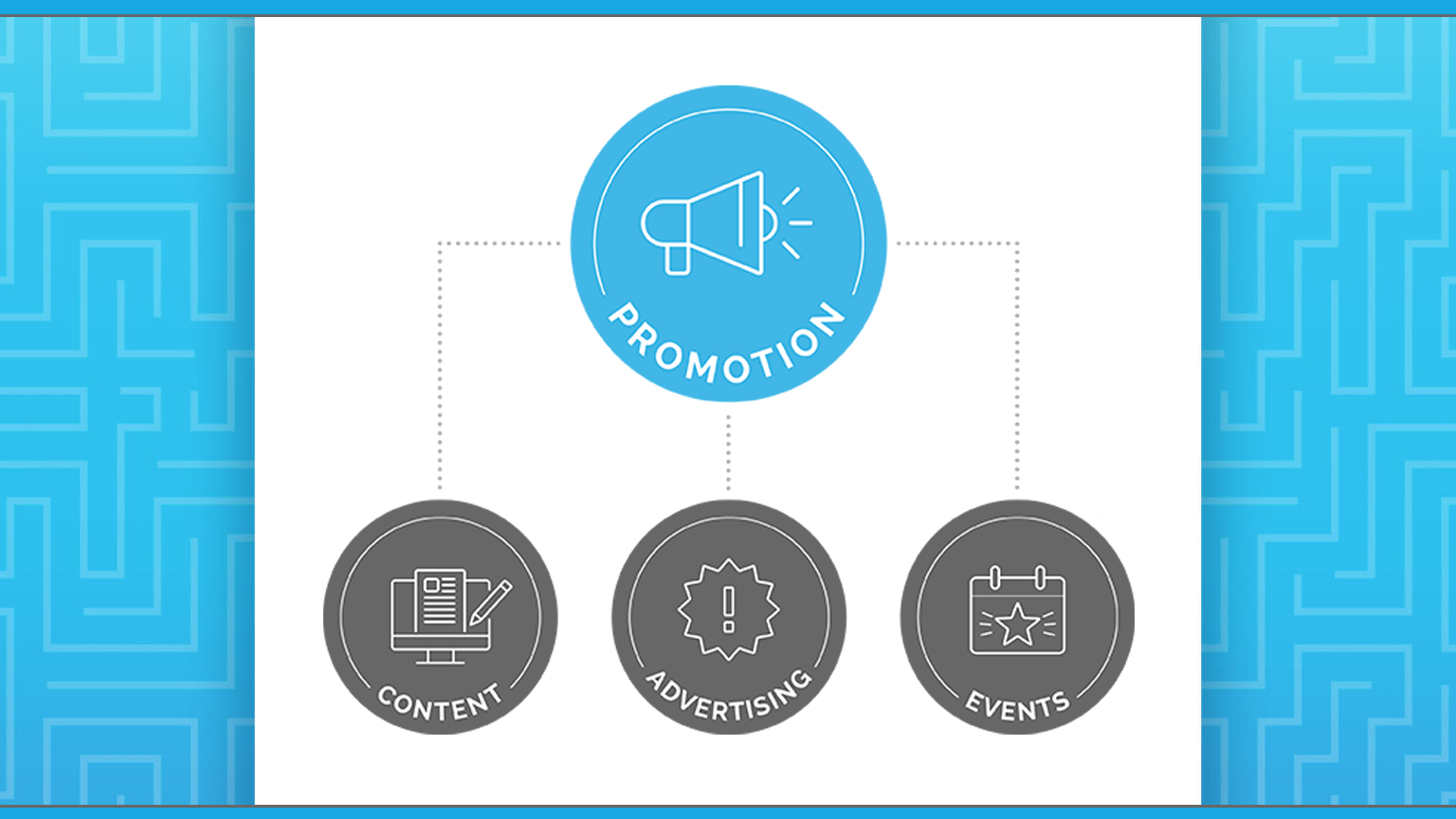Once an organization establishes their Marketing Foundation, we look at Marketing Promotion. At Corporate Three Design we approach marketing a business in three categories:
- Foundation
- Promotion
- Generation
Promotion is a broad category. The Messaging and Visual Identities from the Foundation process help build the Promotion strategy, and it leads back to the Website. With the Promotion strategy in place, it makes it easy to move into Generation. The combination of Promotion and Generation is the meat for our client’s influence and financial growth.
What is Marketing Promotion?
So when we say Marketing Promotion, what exactly are we talking about? Marketing Promotion is any category that furthers the awareness and reach of the brand. (When we talk about Marketing Generation in the next post, we’ll talk about some of these same elements but as a part of a strategy for generating leads.)
For our purposes we identify these 3 areas as the main ways we build marketing promotion roadmaps for our clients:
- Content
- Advertising
- Events
What is Content?

Over the last ten years, the word “content” has encompassed more and more categories. As a general rule, we like to think of marketing content as anything that is produced to educate or entertain about a brand. So here is a list of what that could include:
- Blog posts
- Social media posts (written or video)
- Emails
- Text Messages
- Photography
- Vlogs
- Videos
- Infographics
- Memes
- White Papers
- Case Studies
- eBooks
- Checklists
- Landing Pages
- Sales Letters
- Webinars
You get the idea. It’s an ever growing list that all starts with words whether written, oral, or visual.
We always want the content that we create to be solving a problem for the target audience.
To decide the best delivery method, we go back to what we learned about our client’s target audience in the Marketing Foundation process.
If our client is B2B focused and the average age of the decision maker is 45 looking for data center power supplies, we’ll put more emphasis on blog posts and emails. But if our client is a startup selling an app that offers a new way of parking in high density cities, we’ll put more emphasis on video social media strategies coupled with push notifications within the app.
If our client is purely looking for awareness strategies, we’ll focus on suggestions like the ones above, but most of our clients are looking for strategies that impact their bottom line. Even if they don’t ask for it, we’ll start with the end goal in mind of building traffic and generating emails for our clients. We want our clients’ budgets to be put to good use building a list they know that they know are full of qualified leads.
Isn’t Advertising Content?

The answer to that question is, “yes” but with a paid placement and a cohesive campaign.
Well known run awareness campaigns to keep their brand top of mind – think Coca-Cola, Pepsi, FedEx, Apple, etc… Wwe work with clients who run advertising to impact their bottom line. We want our clients to spend advertising dollars with the intention of selling products or collecting qualified emails.
A singular ad starts with a message plus an ask that an organization wants to convey to their target audience. An effective advertising strategy builds upon the central idea and the ask, then develops content to be placed on different channels. It takes a viewer seeing the same information multiple times before they are ready to make a buying decision.
When we work with clients who want to spend their hard earned budget on an advertising campaign, we go back to what we learned in their Marketing Foundation. We keep their target audience in mind, the problem our client solves and the benefit to their consumers. We’ll come up with the main idea and identify the right channels for the message.
In the 1930s movie studios discovered that it took on average seven times of seeing an ad in multiple locations for their next movie before the audience would decide to see it. This became known as the Rule of 7. It still holds true that it takes a consumer seeing the ad multiple times before they make a buying decision, but today we have exponentially more channels to place ads.
Here are a few places businesses can advertise in no particular order:
- Retargeting display ads across the internet
- Display ads on a specific website
- PPC Search Engine Ads (Google, Bing, YouTube etc…)
- Social media ads (Facebook, Twitter, Instagram, LinkedIn, Pinterest, etc…)
- TV or Streaming Channel Commercials
- Print Ads in Local Publications
- Influencer Marketing
- Sponsorships of an Event or Trade Show
- Billboards
- Radio Ads
For our client’s advertising campaigns, we identify the best channels to reach their target audience and what will deliver the best results for their budget. All ads need to end up back at the client’s website. Usually on a landing page where the viewer can only do one thing such as buy the product or submit their email address for a helpful piece of information. This leads us into the Generation strategy covered in depth in a separate blog.
How do Events fit into a Marketing Promotion Strategy?

Events are the third prong of our Promotion category. They are an opportunity to get in front of existing and potential customers to build and strengthen relationships.
As a business, you could create your own event or attend an already organized event. These events could be in person, virtual, or a hybrid of both. The event could be as simple as an appreciation golf outing for your clients or as in depth as your own conference to bring thought leaders together around your field.
When planning an event, we want to make sure that we’re appealing to the target audience and have a goal in mind for the whole thing. To pull off events, it takes its own content and advertising strategy. We want to know “the why” so we can make wise budget decisions to produce the result they’re looking for.
Build Relationships with Events
For many of our clients, the idea of hosting or attending an event can be intimidating. There are a lot of moving pieces and parts, and it can be a significant investment of time and money. Try looking at the problem from a different angle. Many of your potential clients may know you from an email, ad or social media post, but business happens because of relationships – especially if you sell a product with a higher price point. Events give you the opportunity to make an in-person connection with those customers. The goal of an event should be to make those in-person connections authentic and memorable.
At this point, you’re probably wondering how you build that connection with virtual events. There are instances where you can’t meet in person whether due to covid concerns or your customers are halfway around the world. I’m still a proponent of in person interaction for the reasons mentioned above, but there are ways to strengthen connection in virtual interactions. If you have a targeted list for an event try calling them, sending them a handwritten note or personalized email. Build elements into any type of event (in-person, virtual or hybrid) that surprise and delight to make it memorable and stand out.
Ready to Get Started
When we’re building a Promotion Strategy for our clients, we use what we learned in the Foundation process to create a Content strategy. With the content strategy in place, we build Advertising campaigns to support their goals. And we suggest Events to build and strengthen relationships with their customers and potential customers.If your organization is ready to start Marketing Promotion work, our team is excited to help you get started. Send us a message or call 402.398.3333.
